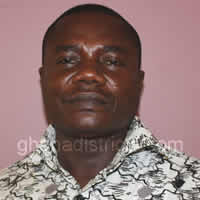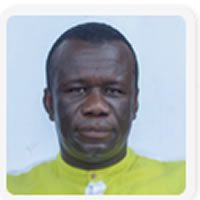Physical features
The physical features of the Prestea-Huni Valley is made up of natural environment namely climate, vegetation, relief and drainage, location and size, the social and cultural environment in which the people live. The physical features are therefore essential elements or factors affecting the socio-economic development of the District.
Location and size
The Municipal has a land area of approximately 1,809 square km and this constitutes about 7 percent of the total land area of the region. It shares boundaries with Wassa Amenfi East and Wassa Amenfi Central Districts in the North, Wassa Amenfi West Municipal to the West, Elembele District to the South West, Tarkwa Nsuaem Municipality to the South, Mpohor Wassa East District to the East and to the North East by Twifo- Ati Mokwa District in the Central Region.
Relief and Drainage
The land rises from about 240m to about 300m above sea level with the topography generally undulating with few scarps ranging between 150m and 300m above sea level. The district falls within the forest disserted plateau physiographic region. Precambrian rocks of Birimian underlie the forest disserted plateau. The Birimian rocks are regarded as the most important formations due to its mineral potentials and thus the existence of minerals like gold in the District (DMTDP 2010-2013).
There are several rivers and streams that flow through the District, notable among them are Ankobra, Huni, Oppon, Bogo, Peme, Subri, Bonsa and Mansi. Major communities located. Along these rivers derive their names from them; e.g Bogoso, from Bogo river, Huniso/Huniano/Huni-Valley from river Huni, Ankobra at Prestea from Ankobra river. The rivers also serve as a source of water for communities as well as for fishing.
Climate
The Municipal is located in the rain forest zone of Ghana and enjoys a wet equatorial climate. It has two rainfall patterns usually from March to July (major season) and from September to November (minor season). The District experiences high rainfall with a mean annual rainfall of 187.83mm. Temperatures are high all year round with significant daily and seasonal variations. The annual average temperatures range between 26oC and 300C . Humidity varies from 75-80 percent in the wet season and 70-80 percent in the dry season.
The soil is deep, open and acidic in many places due to heavy leaching of base from the top soil because of high rainfall, humidity and temperatures. The acidity of the soil reduces the availability of phosphorus, calcium and magnesium (Ibid).
Vegetation
The vegetation of the District is tropical rainforest, with the height of trees ranging between 15-40 metres high. The forest is full of climbers and lianas, which are able to reach into the upper tree layer. Economic trees include mahogany, wawa, odum, and sapele among others. Food crops like cassava, rice, maize and plantain are also grown.
The District’s major forest reserve is the Bonsa Reserve (Aboso) with 160.58 square kilometres. There are other two reserves; Ben West (Huni-Valley) with 26.00 square kilometres and Nkontoben (Hun-Valley) with 49.98 square kilometres.
Activities of illegal mining and other illegal logging are posing a threat to the natural vegetation. Cocoa, oil palm, coffee, rubber, coconut and citrus are some of the major cash crops grown.
Date Created : 11/20/2017 3:00:11 PM






 facebook
facebook twitter
twitter Youtube
Youtube TOLL FREE 0800 430 430
TOLL FREE 0800 430 430 +233 593 831 280
+233 593 831 280 GPS: GE-231-4383
GPS: GE-231-4383 info@ghanadistricts.com
info@ghanadistricts.com Box GP1044, Accra, Ghana
Box GP1044, Accra, Ghana